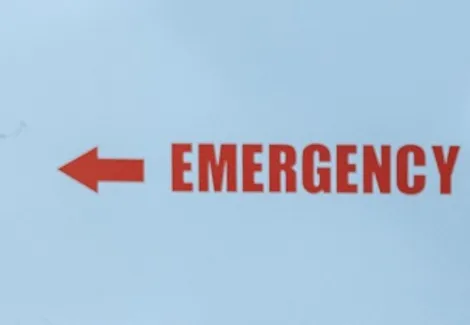Even when you practice good self-care, life stressors can sometimes snowball—leaving you feeling overwhelmed, exhausted, or emotionally unbalanced. Preparing in advance for a mental health emergency can make all the difference in how you cope. Just like stocking a first-aid kit for physical injuries, creating a mental health toolkit helps you stay resilient when unexpected challenges arise.
Why a Mental Health Emergency Plan Matters
Life stressors—from financial setbacks to relationship crises—don’t always wait for a convenient time. When multiple stressors converge, you may experience:
-
Intense Anxiety: Racing thoughts, panic attacks, or an inability to focus.
-
Severe Depression: Persistent hopelessness, loss of motivation, or thoughts of self-harm.
-
Heightened Irritability: Anger outbursts or strained relationships with loved ones.
-
Physical Symptoms: Fatigue, headaches, or gastrointestinal distress tied to stress.
By preparing in advance, you can minimize the impact of a crisis and access coping strategies before you reach a breaking point.
Key Components of a Mental Health Emergency Toolkit
1. Build an Emergency Fund
Why it helps: Financial stress is one of the leading triggers for mental health decline. Having a dedicated savings account—even a small one—can reduce anxiety when unexpected expenses arise.
-
Aim for 3–6 months of living expenses in a separate “mental health” savings.
-
If that’s not possible right away, start by setting aside $20–$50 per paycheck.
-
Automate transfers so you save without having to think about it.
An emergency fund provides a buffer against sudden crises—like car repairs, medical bills, or job loss—so you can focus on your mental well-being instead of scrambling for cash.
2. Cultivate Strong Supportive Relationships
Why it helps: In a mental health crisis, having trusted friends, family members, or mentors you can lean on is crucial.
-
Identify 2–3 supportive people (friends, siblings, or extended family) who consistently listen without judgment.
-
Share your plan: Let them know how they can best support you (e.g., sending a text, checking in by phone, or even dropping off a meal).
-
Set healthy boundaries: Recognize toxic relationships that drain your energy and limit contact, especially during high-stress times.
Strong relationships provide emotional “first aid” when you’re feeling overwhelmed, reducing isolation and promoting faster recovery.
3. Develop a Habitual Self-Care Routine
Why it helps: Preventive self-care—like exercise, healthy eating, and sleep—builds resilience so you’re less vulnerable to stress. When self-care becomes second nature, you’re better equipped to manage crises.
-
Choose Self-Care Activities You Enjoy
-
Mindful breathing or short guided meditations (5–10 minutes daily)
-
Regular movement (a morning walk, yoga, or stretching)
-
Creative outlets (journaling, painting, or playing music)
-
-
Commit to a 21-Day Habit
-
Research shows it takes about three weeks to solidify a new habit.
-
Mark a calendar or use a habit-tracking app (like Habitica or Streaks) to celebrate consistency.
-
-
Rotate Self-Care Options
-
Keep a list of “emergency self-care” strategies—quick breathing breaks, five-minute journal prompts, or a short walk outside.
-
Use this list when time or energy is limited.
-
By embedding self-care into your daily routine, you create a foundation of well-being that can withstand intensified stress.
4. Create a Personalized Crisis Plan
Why it helps: A clear, written plan guides you through a crisis when your mind feels foggy. It ensures you know exactly what steps to take when you’re not at your best.
-
Identify Your Warning Signs
-
Physical: Sleep disturbances, appetite changes, or body tension
-
Cognitive: Racing thoughts, negative self-talk, or concentration difficulties
-
Emotional: Overwhelming sadness, irritability, or feelings of hopelessness
-
-
List Immediate Coping Strategies
-
Mindful breathing: Inhale for 4, hold for 2, exhale for 6—repeat for 5 minutes.
-
5-4-3-2-1 Grounding: Name 5 things you see, 4 things you feel, 3 things you hear, 2 things you smell, 1 thing you taste.
-
Short physical activity: A 3- or 5-minute walk, gentle stretching, or shaking out your limbs.
-
-
Designate Emergency Contacts
-
At least one mental health provider (therapist, psychiatrist, or counselor)
-
Two close friends or family members who know your situation
-
Local crisis hotline numbers (e.g., 988 Suicide & Crisis Lifeline in the U.S.)
-
-
Plan Step-by-Step Actions
-
If warning signs appear, pause and consult your crisis plan.
-
Contact a friend for support or call your therapist’s after-hours number.
-
Use an approved coping strategy immediately (e.g., breathing exercise).
-
If symptoms escalate (e.g., thoughts of harm), call emergency services (911 in the U.S.) or go to the nearest hospital.
-
A written crisis plan reassures you that there’s a path forward—even during your darkest moments.
5. Keep a Self-Care and Crisis Journal
Why it helps: Journaling offers clarity, emotional release, and insight into patterns you might not notice otherwise.
-
Daily entries (5–10 minutes) detailing mood, sleep, stressors, and self-care actions.
-
Record triggers and how you responded. Over time, you’ll identify what strategies work best.
-
Highlight positive moments—no matter how small (e.g., “I got out of bed at 7 AM” or “I meditated for 5 minutes”).
When a crisis hits, revisit past entries to remind yourself of coping strategies that succeeded before.
6. Stock Your Environment With Soothing Tools
Why it helps: When emotional distress peaks, immediate access to calming items can quickly de-escalate anxiety.
-
Sensory Kit:
-
A soft blanket or weighted lap pad
-
Aromatherapy (lavender spray or essential oil roller)
-
Soothing music playlist or noise-canceling headphones
-
-
Brain Fog Toolkit:
-
A notepad and pen for mind-dumping intrusive thoughts
-
Fidget toy or stress ball to release physical tension
-
A small book of uplifting quotes or affirmations
-
-
Emergency Supplies:
-
Bottled water and healthy snacks (nuts, fruit, or protein bars)
-
Pre-written contact list for friends, therapists, and hotlines
-
Organizing these items in one “crisis drawer” or box ensures you can access them even when your energy is low.
7. Learn to Recognize When to Seek Professional Help
Why it helps: Some mental health emergencies require expert intervention. Early recognition and timely help save lives.
-
Persistent Warning Signs (lasting more than two weeks):
-
Intense sadness or hopelessness
-
Loss of interest in previously enjoyed activities
-
Repeated panic attacks or extreme anxiety
-
Thoughts of self-harm or suicide
-
-
Immediate Red Flags (seek help right away):
-
Suicidal ideation or plan
-
Significant decline in daily functioning (inability to sleep, eat, or bathe)
-
Hearing voices or experiencing paranoia
-
If you or someone you know exhibits these signs, contact a mental health professional immediately, call your local crisis hotline, or go to the nearest emergency department.
Putting It All Together: Sample Mental Health Emergency Plan
-
Morning Routine
-
Wake up at a consistent time
-
5 minutes of mindful breathing
-
Journal: Rate mood (1–10) and note any anxiety or stress triggers
-
Healthy breakfast and hydration
-
-
Daily Self-Care
-
10 minutes of movement (walk, stretch, or light yoga)
-
Scheduled “mindful breaks” (mid-morning and mid-afternoon)
-
Nutritious lunch and snacks
-
5-minute mid-day journal check-in
-
-
Evening Wind-Down
-
Limit screens 1 hour before bed
-
Nightly gratitude journal (3 positive moments)
-
10 minutes of progressive muscle relaxation or guided meditation
-
Sleep routine: consistent bedtime, dim lights, calming tea
-
-
Crisis Plan Activation
-
Identify personal warning signs (e.g., “I am sleeping fewer than 6 hours, feeling hopeless”).
-
Implement an immediate coping strategy (e.g., “I will practice 5-4-3-2-1 grounding for 5 minutes”).
-
Contact a trusted friend or family member to check in
-
If feelings worsen or suicidal thoughts arise, call 988 (U.S.), 999 (U.K.), or local emergency services.
-
-
Weekly Review
-
Review journal entries to identify patterns (sleep, diet, stress triggers)
-
Adjust routine as needed (e.g., add more self-care, tweak sleep schedule)
-
Check emergency fund balance and set small savings goals if needed
-
Reconnect with supportive relationships (call or meet a friend, schedule therapy)
-
Final Thoughts: Consistency and Compassion
Preparing for a mental health emergency is an ongoing process of planning, practice, and self-compassion. By proactively building an emergency fund, strengthening supportive relationships, establishing consistent self-care habits, and creating a clear crisis plan, you arm yourself with the tools needed to weather life’s inevitable stressors.
Remember:
-
Small steps matter: Even a five-minute breathing exercise can reset your nervous system.
-
Recovery is not linear: You may face setbacks. Treat yourself with kindness and keep moving forward.
-
Reach out early: There is no shame in seeking help sooner rather than later.
Investing a little time now to prepare your mental health toolkit can save you from feeling powerless when crises strike. You deserve to feel stable, supported, and equipped—no matter what life throws your way.


